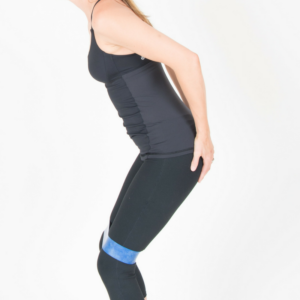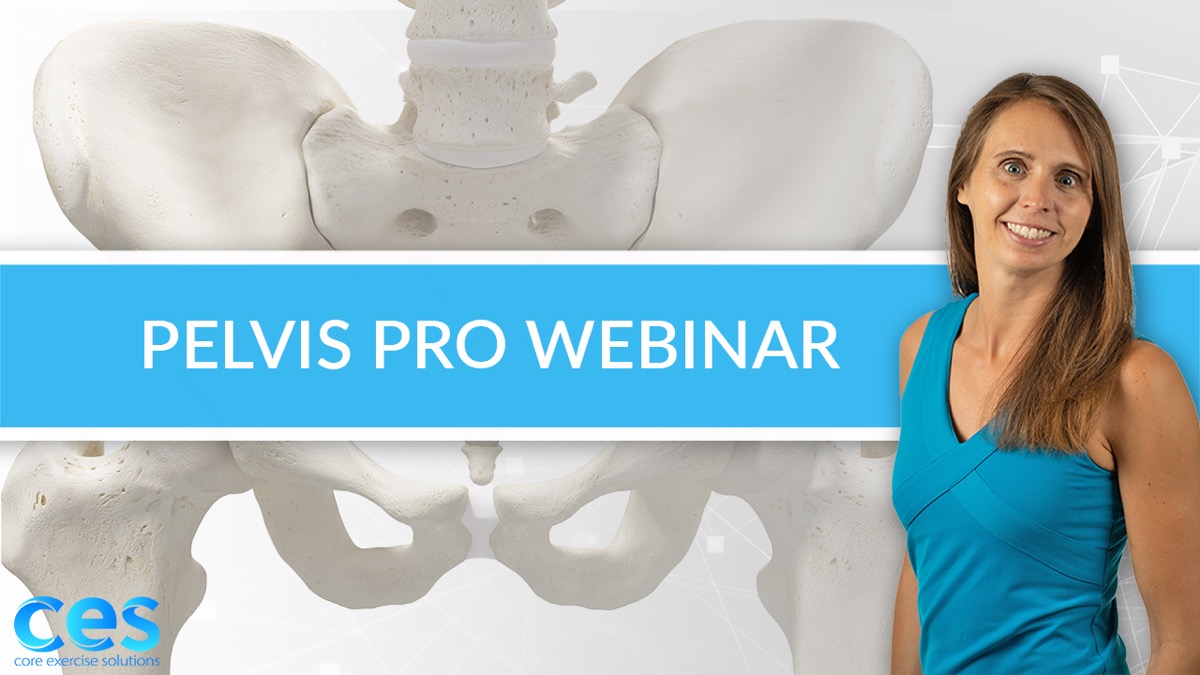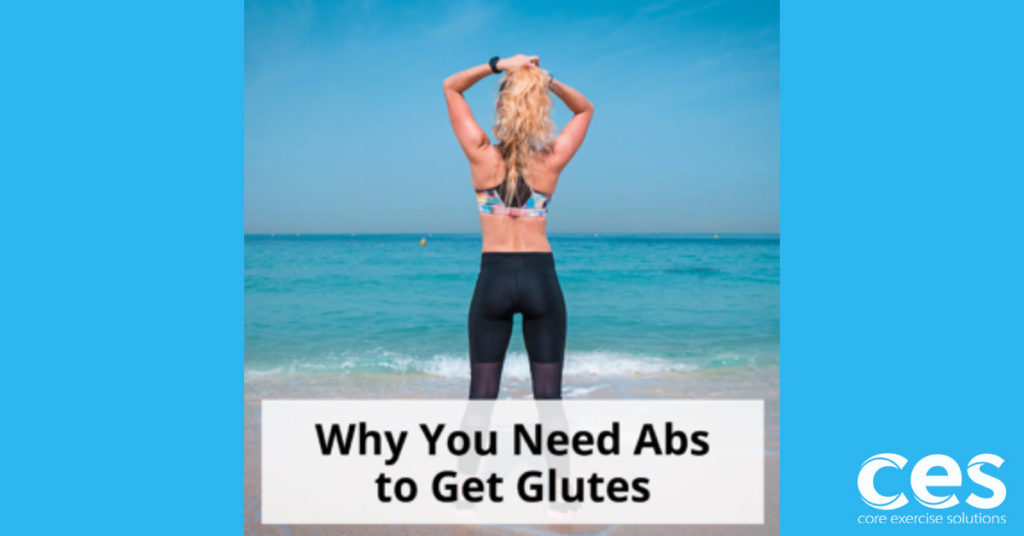It's really difficult to build glutes without first having some abs.
Why is this?
Because your glutes attach to your pelvis and they need a stable surface from which to generate power. Your core provides that stability. Without at least a little core stability, your lower back likes to initiate moment. This is bad because your hips should be the movement initiators!!
Ever go for a power walk or run and come back with tight calves?? Yep, you need better glutes!
More importantly... or just as importantly why are those hips so important? Why does it matter that they initiate the movement instead of your low back?
Let's dig a little deeper and look at why.
Great glutes are a good indicator that you have a great pelvic floor. There are always exceptions, but one of the most common trends I see in women that leak, have pelvic floor weakness or tightness is glute clenching. Glute clenching means glute weakness! Over time the clenching leads to tightness. The glute max is the primary external rotator (turns out) of the hip. Do you know what else does hip rotation? Some of the muscles in your pelvic floor. The body is connected and everything affects everything else!
Having weak glutes or glutes that clench directly affects your pelvic floor strength.
Back to abs and why they are important.
If you have great core strength (not an ability to do 100 crunches on the living room floor- that is NOT the core strength that I'm talking about), it will naturally activate every time you move, keeping your lower back happy as well as allowing your glutes a stable pelvis to work from. Think about it! How great would it be if you cleaned up, doing small repetitive forward bending task without your low back being achy?
Occasionally, I do like to pick up all the toys off the living room floor so things look like at least one adult lives in the house. How great would it be to pick up and have your butt get stronger in the process and have your low back feel great?
This is what it means to have a great core and great glutes!
What do you need to do to get this?
#1. Establish Core Strength
That's a multifaceted issue which I'll cover more on later, but it involves correct deep breathing, ability to contract ALL your abs both concentrically and eccentrically (tighten and lengthen), not just the 6 pack in the front, and pelvic floor automatic control. One last piece of core strength that's important is being able to regulate the appropriate amount of core pressure. I see a lot of women who don't have enough and other women who tighten and bear down for even the simplest movement which causes their prolapse to worsen. So, core strength is vital and the ability to control it.
One of my favorite core exercises is a deadbug.
#2. Glutes that are strong in the lengthening phase.
Too much contracting, clenching and focusing on exercises like bridges and clams, leave your glutes strong only in the contracting phase but not the lengthening phase. Nothing wrong with contracting, we just need to make sure you get enough lengthening as well to balance out all that contracting!
#3. Awareness to initiate from your hips and glutes with core control, instead of from your back.
Today, I want to talk mostly about the awareness piece.
Last week, I spent 15min teaching a patient the start of a squat. Not how to do a full squat but how to initiate a squat.
She came in wanting better glutes to help with knee pain. She has done "squats" before. Loads of them. But, she had never done them correctly. (Well, she did them mostly correct, but sometimes close only counts with horseshoes and hand grenades.)
Exercise is meant to carry over to real life and real life was hurting her knees because she was not initiating a squat correctly. (Think about all the times in life we initiate a squat. Every little thing you reach down to pick up. It's a lot!! Don't even get me started on how great we are at filling a dishwasher. My family deserves some kind of award for it!)
Once she got about 10% into it, she had great form, but the first part came from her lower back which set the tone for her glutes and core. Instead of eccentrically (elongating) loading her glutes to initiate the movement, she arched her back. That was how she started her squat.
What you're feeling for with the test below is core stability to allow for hip mobility. Pretty cool right? Your core keeps your pelvis stable and that allows your glutes to lengthen. If this is happening, you'll build great glutes because you'll use them all day long. If it's not a habit, I bet your lower back feels pretty tight by the end of the day. It also carries over into pelvic floor and diastasis healing.
It's subtle and small but how we initiate a movement matters most because this is how you prime a system. This is what you're setting up to work the most. How you start counts!
Glute Ab Test

***I want you to place your hand on your bottom. Now, initiate the sit back into a squat. Just a couple inches!!! Did you feel your glute lengthen or did it stay the same?
Now, let's test from another place. Place one hand on your stomach and one hand on your low back. Initiate your squat.
Did your back move at all? Even just a little? You should not be able to tell you are sitting back into a squat. The hand on your back and abs should stay completely still.
Well, that is if you want to load your glutes instead of your spine!!! If you want to load your spine and bypass your glutes, then, by all means, arch away. Ok, don't do that, please!! (Our spines are meant to bend and I definitely want you moving your back but I just don't want that to be the only thing you move all day never letting your hips get any action. That's a recipe for a tired back!)
How did the test go for you? Did you pass with flying colors or did your lower back want to move?
Free Pelvis Pro Webinar

We'll cover external rotator tightness, creating length in the piriformis, taking the pressure off labral tears, improving hip stability, decreasing hip flexor tension, and much more!
Join us today for this 45-minute Pelvis Pro Webinar, absolutely free.
We don't spam or give your information to any third parties. View our Terms of Use and Privacy Policy.


